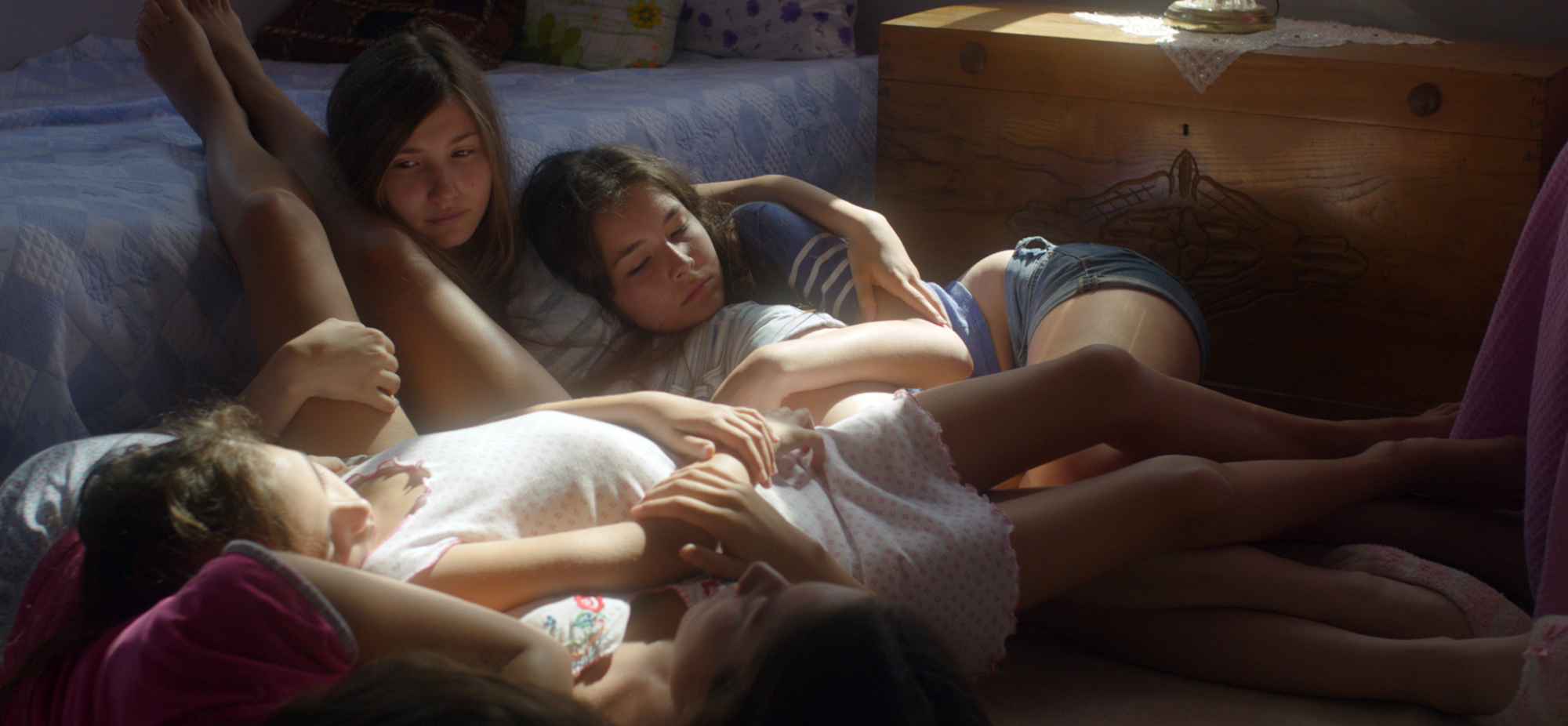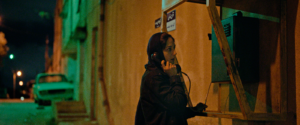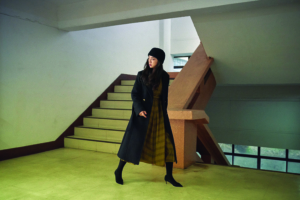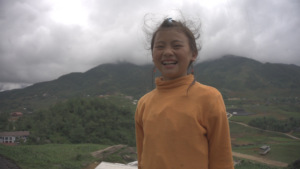When close-knit sisters Lale (Günes Sensoy), Nur (Doga Doguslu), Ece (Elit Iscan), Selma (Tugba Sunguroglu) and Sonay (Ilayda Akdogan) attend a soccer match partway into writer/director Deniz Gamze Ergüven’s Mustang (2015), joy radiates from their teenage faces. As the five young women stamp their feet on their chairs, scream along with the excited crowd and absorb the frenzied atmosphere swirling around them, their expressions may change with the passing seconds; however, the same blend of revelry and release remains in every look, squeal and flurry of movement. Here, the quintet is truly free: from the gaze of others and their accompanying judgement, from the restrictive rules of the overly protective grandmother (Nihal Koldas) and uncle (Ayberk Pekcan) who have raised them since their parents’ death a decade earlier, and from the house ‘1000 kilometres from Istanbul’ that has become their prison. If only fleetingly and for the duration of a match, they’re also liberated from the societal anxieties relating to their youth and nascent sexuality as well as to their bond. In the mess and mayhem of a sporting stadium, they’re able to be themselves, and to be together.
In her first feature, Ergüven makes this moment count, not just for protagonists that she has described as having ‘one body with five heads, they are one main character’,[1]Deniz Gamze Erugüven, in ‘Mustang Director Says Cast Is Really “One Main Character with Five Heads”: Nominees Night’, The Hollywood Reporter, 9 February 2016, <http://www.hollywoodreporter.com/video/mustang-director-says-cast-is-863363>, accessed 17 May 2016. but also for the audience immersed in their struggle against expectations and limitations placed on women in patriarchal cultures. Cinematographers David Chizallet and Ersin Gok shoot the scene close and tight, filling the frame with the siblings’ bouncing, squealing, hugging and hair-flicking to the avoidance of the bulk of their surroundings. While their fellow attendees can be spied around them, only the girls, their revelatory reactions and the fact that they’re sharing the experience with one another monopolise our attention. Placing the camera at a higher but still-adjacent vantage point both emphasises the close-knit cohort’s presence within a thriving mass and underscores their exclusive intimacy. Though the sequence only spans a brief sixty-two seconds of screen time, it presages the sisters’ descent from childhood freedom to male domination, as well as the responses to their subsequent situation, all in aid of exploring the power of female solidarity.
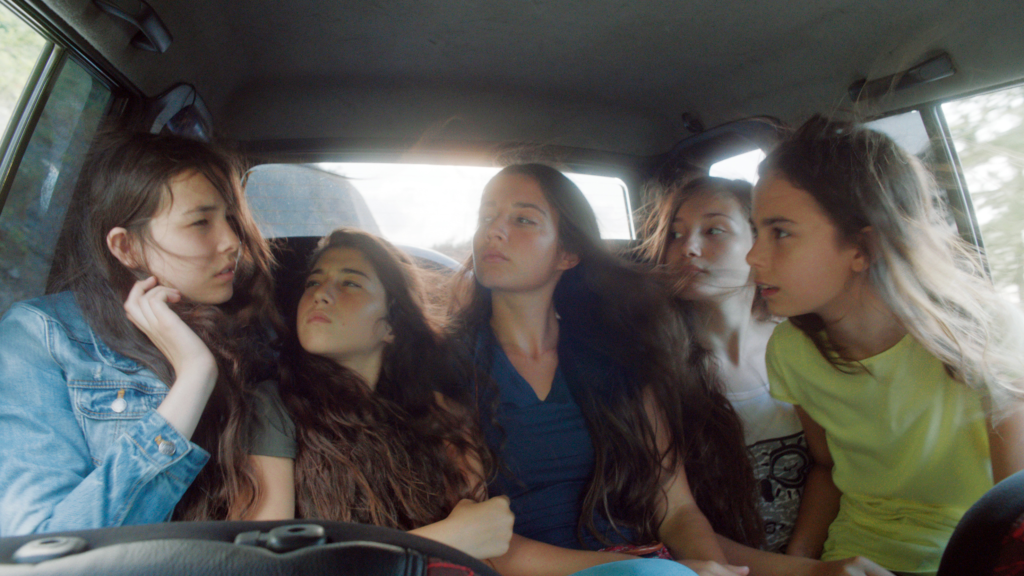
Examining tenacity and the refusal to acquiesce to authority in the manner evoked by the wild horse of its title, Mustang is many things: a coming-of-age story that sets its band of blossoming heroes against conformity and control, a statement against the treatment of women under the conservative interpretation of Islam in regional Turkey, and a fairytale about breaking away from an unjust system. Within those elements, it is also a potent, pertinent and probing dissection of the ways women are scrutinised, feared and subjugated – both for belonging to a gender that is viewed as a corruptive force from the onset of puberty, and for daring to bond with those in the same predicament.
Mustang is many things: a coming-of-age story that sets its band of blossoming heroes against conformity and control, a statement against the treatment of women under the conservative interpretation of Islam in regional Turkey, and a fairytale about breaking away from an unjust system.
Indeed, Ergüven commences her first feature with an innocent, everyday instance of female camaraderie, this time between youngest sibling Lale and her teacher Miss Dilek (Bahar Kerimoglu). On the last day of classes, as school breaks for the summer, Lale is visibly upset as she bids farewell to a figure with whom she clearly enjoys a connection, with her sisters providing comfort. It’s an emotional exchange, but a quiet one, although it is soon forgotten when the girls’ next actions – frolicking on the beach with a number of their male counterparts, then wading into the ocean and climbing onto their classmates’ shoulders for a round of friendly pushing and shoving – take centre stage. Playing with their peers may wash away Lale’s tears, which have long since dried by the time the group steals apples from a neighbouring orchard to eat on their way home; however, a more distressing turn of events awaits.
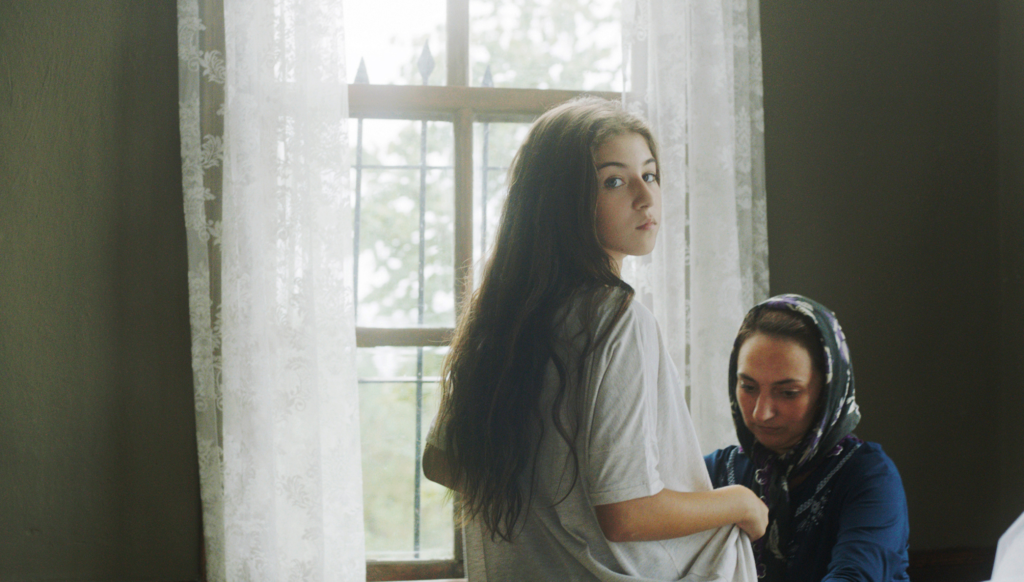
With word of their activities reaching their relatives before they do, the sisters return to a new regime; as twelve-year-old Lale, the feature’s guide and narrator, explains, ‘It’s like everything changed in the blink of an eye. One moment we were fine, then everything turned to shit.’ Chastised by their grandmother for their apparently obscene behaviour, including seemingly pleasuring themselves on boys’ necks, they’re beaten, taken to a doctor to be subjected to virginity testing, and swiftly stripped of any autonomy, individuality or means of interaction with the outside world. Phones are locked away, shapeless sack dresses become the only allowable form of clothing in the presence of others, and straying outside – first beyond the family compound, and then outdoors in general – is prohibited. Soon, the house becomes a ‘wife factory’ abuzz with instructions about cooking, cleaning and other domestic duties, and energised only by the task of preparing the five young women for their primary purpose, at least as far as their guardians are concerned: becoming chaste, compliant, dutiful brides for local men.
Oppression lingers, only increasing every time anyone endeavours to push back against their hardening boundaries – and, with walls made taller and bars soldered onto windows, the sense of confinement continually grows. Yet so does the kind of hope that can only come from knowing that your quandary isn’t just your own, even in a culture where guns are fired in celebration and stealthy deeds come laden with harsh penalties. ‘If we get caught, they’ll murder us,’ Nur recognises conspiratorially at a climactic moment, but accepting that the status quo is as untenable as being punished for their actions. With the tension of potential violence colouring the entire film, the soccer match that brings so much happiness proves one of many stolen moments, made possible by a unified sorority of sisters that faces its restrictive circumstances with the spirit of defiance.
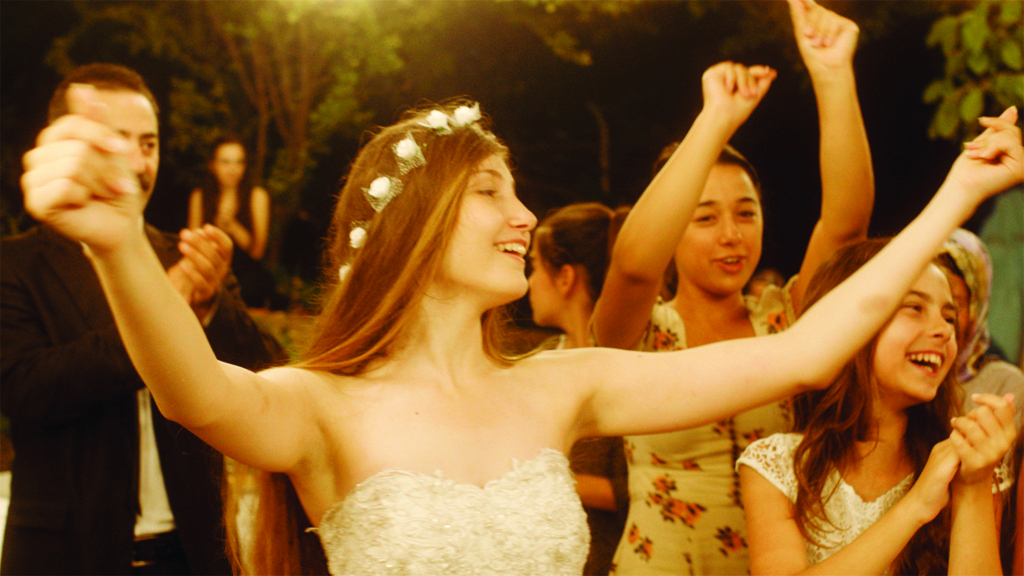
In fact, as a parade of would-be suitors and their parents trek through the house, awkward meetings to determine future marriages take place, and wedding ceremonies start to usher the sisters out into the world, other examples of furtive yet purposeful rebellion litter the narrative. Sonay sneaks out to see the same forbidden boyfriend who had angered her relatives by painting a message of love on their street. Selma claims she has slept with the entire world when she is brought to hospital on her wedding night by new in-laws horrified by and suspicious about the lack of blood on her matrimonial sheets. Ece brazenly beds a stranger in the back of a car during a rare outing beyond the house, while her uncle is mere metres away, inside a bank, running errands. And Lale befriends a kindly delivery driver during one of her secret excursions away from watchful eyes, then begs him to teach her to drive as part of her unspoken but always obvious getaway plan.
With depictions of women in film typically lacking nuance, and female characters often stripped of agency and purpose beyond their relationship to male protagonists, the director’s endeavour is quietly revolutionary and subversive.
Time and again, the siblings try to snatch whatever freedoms they can and, while their actions remain largely uncoordinated, their common motivation remains. Ergüven places as much emphasis on each girl’s unique but united status as she does on their collective blooming maturity and the stifling boundaries placed around them; in Mustang, stressing that much of the girls’ allure, like their safety, is found in numbers is as crucial to the story as their continued detention. Thus, scenes of camaraderie – of limbs intertwined on bedroom floors, brunette tresses flowing out of car windows, lanky figures running down roads and candid dialogue about body parts (‘it’s not your boobs, it’s your fat bum,’ one sister tells the other during an escape attempt) – are intertwined with banter that distinguishes their varied personalities, with everything from precocious tomboy to sexually promiscuous siren, and sullen outcast to lovesick romantic, represented. Each girl reacts to her predicament in a different way, but has the same goal as the rest. Each sister resembles the others in appearance, but brings her own strengths and weaknesses to their plight.
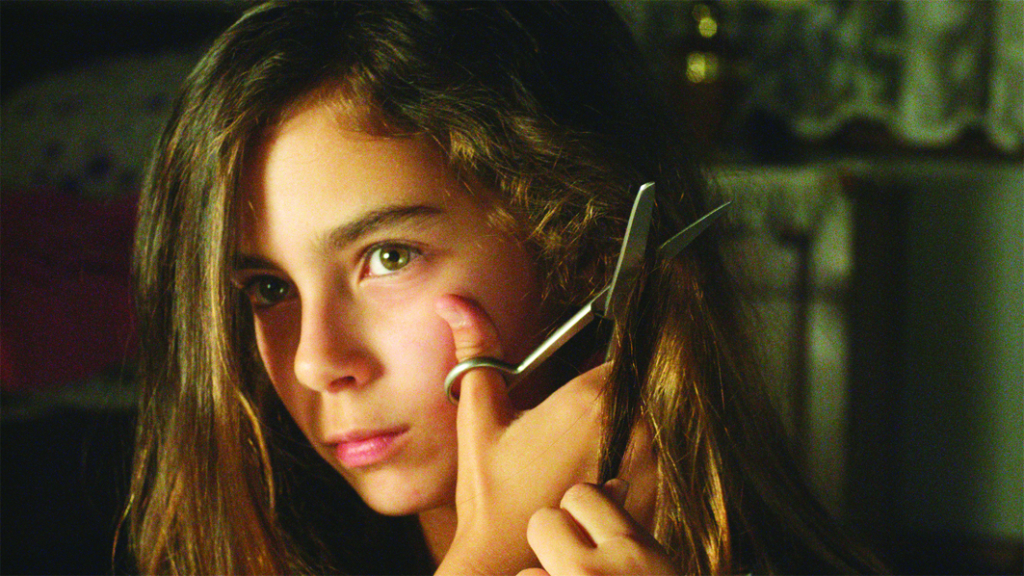
Ergüven has set herself a difficult task, albeit a crucial one: that of examining the ways women deviate from expectation, and both diverge from and converge with one another, particularly when their every deed – and even their physical presence – is the subject of constant monitoring. With depictions of women in film typically lacking nuance, and female characters often stripped of agency and purpose beyond their relationship to male protagonists, the director’s endeavour is quietly revolutionary and subversive. Lale and her siblings are each portrayed – by Ergüven and co-writer Alice Winocour’s script, and by the relative newcomers performing the roles in an effortlessly naturalistic manner – as relatable and understandable, as well as distinctive yet interconnected, whether they’re bickering over the dinner table or conspiring to sneak out of the house. Indeed, they’re never less than a chaotic force to be reckoned with, and it’s not merely a coincidence that their uncle and grandmother employ divide-and-conquer tactics to try to control them. Whether calling the sisters in for punishment one by one, separating them from one another by marrying them off in turn, or inflicting sexual abuse but hiding it from the younger siblings, the main strategy used to regulate and mediate the five girls’ behaviour is to break them apart.
Visually, Ergüven employs two stylistic techniques to augment her primary idea that female solidarity is the tale’s true empowering force. Firstly, the push and pull of her characters and their circumstances manifests in and is heightened by an aesthetic that drifts between dream and nightmare, channelling and encapsulating the alternately warm and dark, tender and terse, hopeful and trapped, and separated and unified elements inherent in the film’s storyline. When golden tones glow against chilly blues and greys, and wistful glances out of open windows are juxtaposed with screens and bars, clear divisions are made evident. The movement of the camera, sometimes loose and fluid, sometimes rigid and restrained, similarly reflects and enhances the narrative’s many contrasts.
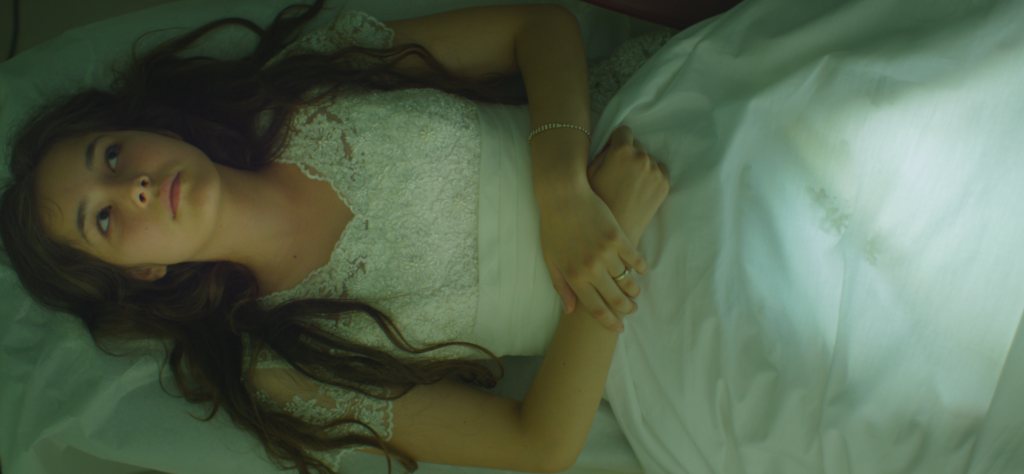
Positioning the film from Lale’s perspective, aligning audiences with her youthful perception and adopting her vantage and outlook, achieves the same feat. It is with a pre-teen’s heady mix of wonder and rebellion that Mustang frames its narrative, and, just as the film gazes lovingly at the central siblings, so does it look pointedly at their aggressors and captors. Never is this more apparent than in the feature’s treatment of the sisters’ older female relatives, who straddle the line between recognising gender bonds and enforcing patriarchal rule. Lale’s perception of her grandmother and aunts seesaws between distrust and a begrudging awareness of their own sacrifices – particularly when they’re instrumental in ensuring the girls’ secret soccer sojourn isn’t discovered – and adds further texture to the film’s multifaceted depictions of femininity.
Accordingly, what it means to be a woman in the twenty-first century is presented as a loaded concept by Mustang, as is how women relate to one another while surrounded by the structures and standards of men. Of course, chronicling a power struggle, a pseudo prison break, and the liberating and tragic repercussions of both renders the movie bleak as well as fanciful; however, in keeping with its focus on duality, such a clash between confinement horror and wistful fairytale proves the source of the film’s potency. Much like in many of the recent efforts it shares thematic commonalities with – from the strong but complicated sisterly bonds of Frozen (Chris Buck & Jennifer Lee, 2013) and the rallying against cultural oppression of In Bloom (Nana Ekvtimishvili & Simon Gross, 2013), to the malevolence of family ties seen in Miss Violence (Alexandros Avranas, 2013) and the haunting sororal melancholy of The Virgin Suicides (Sofia Coppola, 1999) – conflict and complexity linger beyond all else. That’s how Mustang transforms the dispiriting imposition of adversity, abuse and ostensible internment into a shining beacon of hope and a stirring example of the influence of female solidarity – and not just within the relative safety of a crowded soccer match.
Endnotes
| 1 | Deniz Gamze Erugüven, in ‘Mustang Director Says Cast Is Really “One Main Character with Five Heads”: Nominees Night’, The Hollywood Reporter, 9 February 2016, <http://www.hollywoodreporter.com/video/mustang-director-says-cast-is-863363>, accessed 17 May 2016. |
|---|
